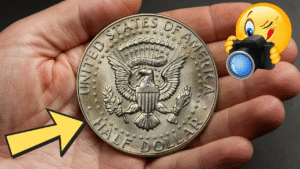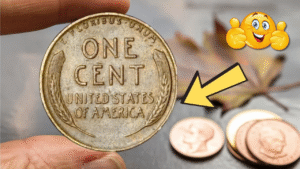A penny worth millions may sound like a fairy tale, but for lucky collectors, it’s a real possibility. The legendary Lincoln Wheat Penny, a humble copper coin first minted in 1909, has captivated the world of numismatics for decades. While most are worth a few cents, a rare variation has commanded a jaw-dropping price of $3,877,500, proving that even the smallest treasures can be life-changing.
Let’s explore what makes the Lincoln Wheat Penny so valuable, which versions to look out for, and how you could potentially find one in your own pocket change.
The History Behind the Lincoln Wheat Penny
Introduced in 1909 to commemorate Abraham Lincoln’s 100th birthday, the Lincoln Wheat Penny was designed by Victor David Brenner. It was the first U.S. coin to feature a president’s portrait. The reverse side depicts two wheat stalks, symbolizing America’s agricultural strength. Minted until 1958, these coins circulated widely, but certain years and mint errors have become highly sought after.
Over 1 billion Wheat Pennies were minted in some years, but not all are created equal. Among the millions, a few rare coins stand out as incredibly valuable to collectors.
Why Are Some Wheat Pennies Worth Millions?
Several factors drive the astronomical prices of rare Lincoln Wheat Pennies:
| Factor | Description |
|---|---|
| Minting errors | Mistakes like striking on the wrong metal or doubled dies can create rare coins. |
| Low mintage | Fewer coins produced in a year increases scarcity. |
| Metal composition | Wartime material changes led to unique variations. |
| Condition | Coins in pristine condition (graded MS-65 or higher) command top prices. |
The 1943 Bronze Wheat Penny is the crown jewel. During World War II, the U.S. Mint switched from copper to steel to save copper for military needs. However, a small number of pennies were accidentally struck on leftover bronze blanks from 1942. Only a handful are known to exist today.
In 2010, one of these bronze pennies sold privately for $3,877,500, setting a record and sparking widespread fascination.
How to Spot a Rare Lincoln Wheat Penny
If you’re curious whether you have a valuable penny hiding in your change, here are key steps to check:
- Look at the date: Focus on pennies minted between 1909 and 1958.
- Check the 1943 penny: Most 1943 pennies are steel and will stick to a magnet. If yours doesn’t stick, it may be the rare bronze version.
- Inspect mint marks: Coins with “D” (Denver) or “S” (San Francisco) mint marks from low-mintage years may be valuable.
- Examine for errors: Look for double stamping, off-center strikes, or unusual features.
- Evaluate condition: Coins with little wear, no scratches, and sharp details are worth more.
Can Rare Pennies Still Be Found in Circulation?
Surprisingly, yes—valuable Wheat Pennies occasionally surface in pocket change, old jars, estate sales, or inherited collections. Though it’s rare, many legendary finds have been reported by ordinary people simply paying attention to their coins.
Even if you don’t discover a million-dollar penny, many Wheat Pennies from earlier years or in good condition can be worth several dollars or more to collectors.
The Enduring Legacy of the Lincoln Wheat Penny
More than just a coin, the Lincoln Wheat Penny is a piece of American history. It reflects the nation’s journey through wars, economic upheavals, and technological advances. For collectors and history buffs alike, these coins are tangible links to the past.
The possibility of finding a rare penny worth thousands—or even millions—keeps collectors searching and checking their spare change. After all, you never know when a simple penny could turn into a fortune.
FAQs
How can I tell if my 1943 penny is bronze or steel?
Use a magnet—steel pennies will stick, but a bronze penny won’t.
Are Lincoln Wheat Pennies still in circulation?
Yes, though rarely. They may turn up in pocket change, old collections, or coin jars.
What’s the most valuable Lincoln Wheat Penny ever sold?
A 1943 bronze penny sold for $3,877,500 in a private sale.
What years should I look for in Lincoln Wheat Pennies?
Focus on 1909–1958, especially 1909-S VDB, 1914-D, and 1943 bronze pennies.
Do mint marks affect a penny’s value?
Yes, mint marks like “D” and “S” can indicate lower mintages and higher values.









